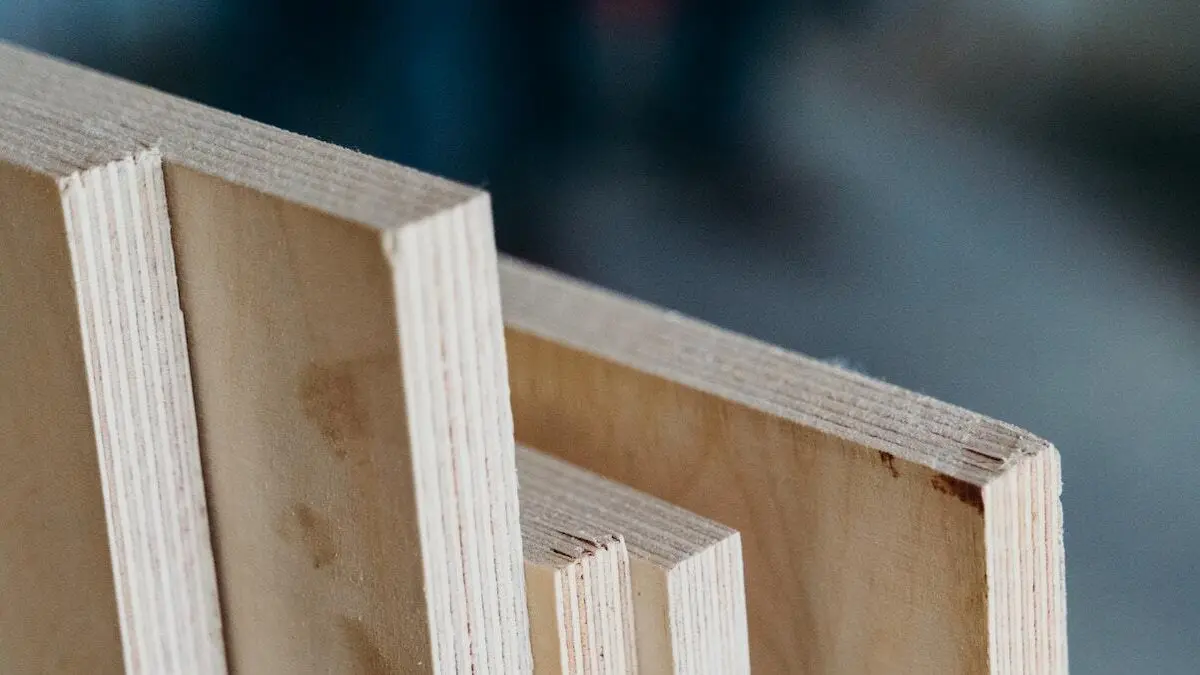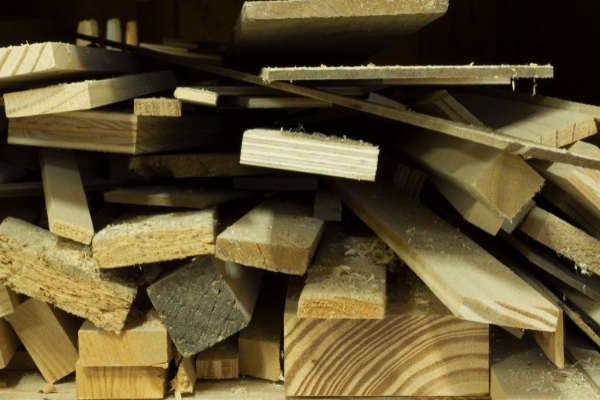Have you ever wondered if plywood is safe to burn? Well, you’re in the right place! In this article, we’ll explore the topic and provide you with some valuable insights. So, let’s dive in and find out if plywood is a safe option for your next bonfire or wood-burning stove!
Now, burning wood can be a great way to stay warm or enjoy the cozy ambiance of a crackling fire. But when it comes to plywood, there are a few things you need to be aware of. So, let’s explore whether plywood is a safe and suitable option for burning.
First, it’s important to understand that plywood is typically made by gluing multiple thin layers of wood together. These layers are often bound by adhesives that may contain chemicals and resins. So, when plywood is burned, these chemicals can be released into the air, posing potential health risks. But don’t worry, we’ll delve deeper into this topic and give you all the information you need to make an informed decision.
So, let’s embark on this journey together to uncover the truth about burning plywood. By the end, you’ll have a clear understanding of whether plywood is safe to burn and whether it’s the right choice for your heating or recreational needs. Let’s get started!
When it comes to burning plywood, safety should be a top priority. Plywood can release toxic fumes and chemicals when burned, posing health risks to both humans and the environment. It’s important to choose alternative materials that are safe for burning, such as untreated wood or firewood specifically designed for fireplaces. Always prioritize safety and follow recommended guidelines for safe burning practices.

Is Plywood Safe to Burn?: An In-Depth Analysis
From campfire gatherings to cozying up by the fireplace, burning wood has long been a traditional way to warm our homes and bring people together. However, not all woods are created equal when it comes to burning safely. One common question that arises is whether plywood is safe to burn. In this article, we will delve into the details, exploring the safety aspects of burning plywood and providing valuable insights to help you make an informed decision.
Understanding Plywood Composition: What Makes It Different?
Plywood is a type of engineered wood made by layering thin sheets of wood veneers together, with each sheet being alternately rotated to enhance strength and durability. Unlike solid wood, plywood often contains glue or adhesive in between the layers, which may raise concerns about its safety when burned.
When plywood is exposed to high temperatures, especially in a burning environment, harmful gases can be released. These gases, such as formaldehyde and volatile organic compounds (VOCs), can have adverse health effects when inhaled. Additionally, the glue used in plywood may contain potentially toxic substances, further adding to the concern.
The Hazards of Burning Plywood
1. Release of Toxic Gases: When plywood is burned, the combustion process releases a range of toxic gases, including carbon monoxide, formaldehyde, and VOCs. These gases can be hazardous to both human health and the environment.
2. Air Pollution: The emission of toxic gases from burning plywood contributes to air pollution. This air pollution can worsen respiratory conditions, trigger allergies, and harm the environment.
3. Health Risks: Inhaling the gases released from burning plywood can lead to short-term and long-term health issues. Short-term effects may include eye, nose, and throat irritation, while long-term exposure has been associated with respiratory problems and even certain cancers.
Considering these hazards, it is essential to take precautions and seek alternatives to burning plywood, if possible. Let’s explore a few key points to keep in mind when it comes to the safe use of plywood.
Tips for Safe Use and Disposal of Plywood
While it is generally advisable to avoid burning plywood due to the harmful gases it releases, there are several other ways to put this versatile material to good use:
1. Reuse or Recycle: If you have plywood that is no longer needed, consider repurposing it for other projects or donating it to someone who can use it. Recycling centers or wood recycling facilities may accept plywood for proper disposal.
2. Proper Ventilation: If plywood needs to be temporarily burned for specific purposes, such as in a construction site, proper ventilation is crucial. Ensure that there is an adequate airflow to minimize the concentration of harmful gases in confined spaces.
3. Choose Alternatives: When building or renovating, opt for alternative materials that are safer for burning, such as natural hardwoods or untreated lumber. These materials have a lower risk of toxic gas release when burned compared to plywood.
4. Proper Disposal: If you must dispose of plywood that cannot be reused or recycled, follow local waste management guidelines. Contact your municipality or waste disposal facility to find out the appropriate methods for disposing of plywood safely.
By following these tips and making informed choices, you can minimize the risks associated with burning plywood and promote a healthier environment for yourself and others.
The Advantages of Wood Burning Stoves
Wood-burning stoves have gained popularity in recent years as a sustainable and efficient way to heat homes. While we have discussed the potential hazards of burning plywood, it is important to note that not all types of wood are created equal. Let’s explore the advantages of using wood-burning stoves and the best types of wood to burn.
1. Energy Efficiency and Cost Savings
Wood-burning stoves are known for their high energy efficiency, capable of providing a significant amount of heat output from a relatively small amount of wood. This efficiency can result in cost savings on heating bills and contribute to a more sustainable lifestyle.
2. Reduced Carbon Footprint
Burning sustainably sourced firewood in a wood-burning stove releases significantly fewer carbon emissions compared to other fuel sources. Wood is considered a renewable and carbon-neutral energy source, meaning the carbon released during combustion is offset by the growth of new trees.
3. Ambiance and Aesthetics
Beyond their practical benefits, wood-burning stoves add a touch of charm, warmth, and coziness to any space. There’s something truly captivating about the sight and sound of crackling firewood, creating a calming and inviting atmosphere.
4. Best Types of Wood for Burning
To maximize the benefits of wood-burning stoves, it is important to choose the right type of firewood. Hardwoods, such as oak and maple, are denser and slow-burning, providing long-lasting heat and requiring less frequent refueling. Softwoods, like pine and fir, burn more quickly and are suitable for starting fires or adding quick bursts of heat.
5. Proper Wood Burning Techniques
To ensure safe and efficient wood burning, it is essential to follow a few key techniques:
– Seasoning Firewood: Properly seasoned firewood has a moisture content of around 20%. This can be achieved by storing the wood in a dry and well-ventilated area for at least 6-12 months. Well-seasoned firewood burns hotter and produces less smoke.
– Proper Airflow: Arrange firewood in a way that allows for good airflow and proper combustion. Avoid overcrowding the stove or blocking the air vents. Adequate airflow helps maintain a clean and efficient burn.
– Regular Maintenance: Clean your wood-burning stove regularly to remove any buildup of soot or creosote, which can reduce efficiency and increase the risk of chimney fires. Follow the manufacturer’s guidelines for maintenance and inspections.
In conclusion, while burning plywood is not recommended due to the release of toxic gases and its potential health hazards, wood-burning stoves offer benefits like energy efficiency, reduced carbon footprint, and a cozy ambiance. By selecting the right type of firewood and practicing proper wood burning techniques, you can enjoy the warmth and beauty of a wood-burning stove while minimizing the impact on both your health and the environment. Remember, making informed choices and considering alternatives are crucial steps towards a safer and more sustainable way of enjoying the warmth of a fire.
Key Takeaways – Is Plywood Safe to Burn?
- Plywood is generally safe to burn as long as it is not treated with chemicals or paint.
- However, burning plywood releases harmful chemicals such as formaldehyde, which can be dangerous for your health.
- It is best to avoid burning plywood indoors or in poorly ventilated areas to minimize the risk of exposure to these chemicals.
- If you choose to burn plywood, ensure it is clean, untreated, and not coated with any harmful substances.
- Always prioritize safety and consider using alternative methods for wood disposal, such as recycling or proper waste management.
Frequently Asked Questions
When it comes to burning materials, safety is always a top concern. Here are some common questions related to whether plywood is safe to burn:
1. Can plywood be safely burned for warmth or as firewood?
Burning plywood is not recommended for several reasons. First, many types of plywood are treated with chemicals that can be harmful when burned. These chemicals may release toxic fumes into the air, posing a health risk to you and those around you.
Additionally, plywood contains adhesive resins that can release harmful volatile organic compounds (VOCs) when burned. These VOCs can cause respiratory irritation and other health problems. It’s best to avoid burning plywood for warmth or as firewood.
2. Are there certain types of plywood that are safe to burn?
While there may be plywood products on the market that claim to be “safe to burn,” it’s important to exercise caution. Even if a particular type of plywood is labeled as safe, it’s important to consider the chemicals and adhesives used in its production.
If you’re looking for a safe and efficient source of firewood, it’s best to stick to traditional hardwoods like oak, maple, or birch. These types of wood are known to burn cleanly and efficiently without releasing harmful substances.
3. What are the potential health risks of burning plywood?
Burning plywood can release a range of hazardous substances, including formaldehyde, volatile organic compounds (VOCs), and other toxic gases. Exposure to these substances can lead to respiratory problems, eye irritation, headaches, nausea, and other health issues.
In some cases, prolonged exposure to the chemicals released when burning plywood can even lead to serious long-term health effects, such as cancer. It’s crucial to prioritize your health and avoid burning plywood as fuel.
4. Is there a safe way to dispose of plywood?
If you have old plywood that you need to dispose of, it’s best to explore environmentally friendly options. You can contact your local waste management facility to inquire about proper disposal methods for plywood in your area.
Recycling plywood or finding alternative uses for it, such as repurposing it in DIY projects, are also viable options. By choosing responsible disposal methods, you can help minimize potential harm to the environment and human health.
5. What alternative materials are safe and efficient for burning?
If you’re looking for safe and efficient materials for burning, consider using seasoned hardwoods like oak, maple, or birch. These types of wood burn cleanly and produce high heat output, making them ideal choices for firewood.
Other suitable options include fruitwoods like apple or cherry, as well as ash and hickory. It’s important to ensure the wood is properly seasoned (dried) before use to maximize efficiency and minimize the release of smoke and pollutants.

Best way to burn plywood
Summary
Plywood can be safe to burn if it meets certain conditions. Plywood that is made with urea-formaldehyde or other chemicals can release toxic fumes when burned, so it should never be used as firewood. However, if the plywood is labeled as “exterior” or “waterproof,” it likely contains less harmful chemicals and can be burned safely in a well-ventilated outdoor area.
It is important to properly dispose of plywood if it cannot be burned safely. Burning plywood that contains toxic chemicals can harm our health and the environment. Always check the label and, when in doubt, consult with local authorities or a professional to ensure safe and responsible plywood disposal.
